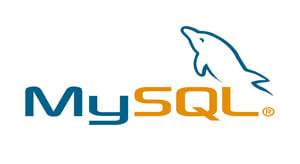Financial statements are the lifeblood of your business’s financial health.
They provide a snapshot of your company’s financial performance and are essential tools for decision-making, planning, and evaluating your business’s stability and growth potential. In this article, we’ll delve into the three fundamental financial statements: the Balance Sheet, the Income Statement, and the Cash Flow Statement and why understanding financial statements is so important.
The Balance Sheet
The Balance Sheet, also known as the Statement of Financial Position, is a crucial financial document that provides an overview of your company’s financial condition at a specific point in time. It consists of three key components:
a. Assets: These are everything your company owns, from cash and accounts receivable to inventory and property. Assets are divided into current assets (e.g., cash, accounts receivable) and non-current assets (e.g., property, equipment).
b. Liabilities: These represent your company’s financial obligations, such as loans, accounts payable, and salaries payable. Like assets, liabilities are divided into current (short-term) and non-current (long-term) liabilities.
c. Equity: Equity represents the net worth of your business. It’s calculated as assets minus liabilities and reflects the residual interest of the owners in the company’s assets.
The Balance Sheet equation is: Assets = Liabilities + Equity. It’s always in balance, ensuring that every dollar of assets is funded by either liabilities or equity.
The Income Statement
The Income Statement, also known as the Profit and Loss (P&L) Statement, offers insights into your company’s profitability over a specific period, usually a month, quarter, or year. It is divided into two main sections:
a. Revenue (Income): This section includes all the money your company earns from sales, services, and other income sources.
b. Expenses: Here, you list all the costs your business incurs to operate. This includes items like salaries, rent, utilities, and more.
The Income Statement’s formula is simple: Revenue – Expenses = Net Income (Profit) or Net Loss. A positive number indicates profit, while a negative number indicates a loss.
The Cash Flow Statement
The Cash Flow Statement provides a detailed account of how cash enters and exits your business during a specific period. It’s divided into three categories:
a. Operating Activities: This section deals with cash generated or used by your company’s core operations, like selling products or providing services. It includes cash from customers, payments to suppliers, salaries, and more.
b. Investing Activities: Here, you record cash flow related to the purchase and sale of assets, like equipment or investments.
c. Financing Activities: This section includes cash flow from borrowing and repaying loans, issuing or repurchasing company stock, and paying dividends.
The key takeaway is that the Cash Flow Statement helps you understand your business’s liquidity, ensuring you have enough cash to meet your obligations.
Putting It All Together
These three financial statements work together to provide a comprehensive picture of your business’s financial health. The Balance Sheet shows your company’s financial position at a specific point in time, while the Income Statement reveals profitability over a period. The Cash Flow Statement, on the other hand, tracks cash movements and ensures you have the liquidity to keep your business running.
By regularly analysing and understanding financial statements, you’ll gain the insights needed to make informed decisions, plan for the future, and maintain a strong and healthy financial foundation for your business. Whether you’re a small startup or a well-established corporation, understanding financial statements is essential for your company’s success.

Momentum Bookkeeping Ltd
Mentieth House, 29 Park Circus, Glasgow, G3 6AP
Call. 0141 375 1240
Email. info@mvbooks.co.uk





